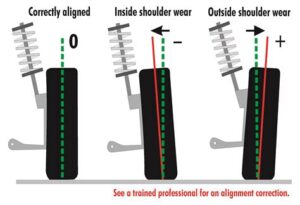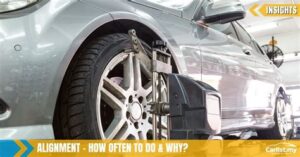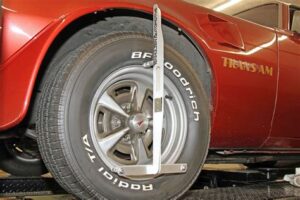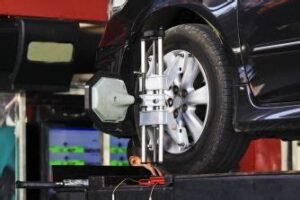Discover the significance of race car alignment, types of tools, their features, correct usage, and the benefits for optimal performance.When it comes to optimizing a race car’s performance on the track, few factors are as crucial as precise alignment. Proper alignment not only enhances handling and stability but also ensures that every ounce of power is effectively translated to the pavement. This blog post will delve into the importance of race car alignment, exploring the various types of alignment tools available and the essential features to look for in them. We’ll also discuss how to use these tools correctly to achieve optimal results and highlight the significant benefits of maintaining proper race car alignment. Whether you’re a seasoned racer or a newcomer to the sport, understanding these concepts is vital for maximizing performance and safety on race day. Let’s gear up and dive into the world of alignment tools!
Importance of Race Car Alignment
Race car alignment is a critical component in the overall performance of a race car. Proper alignment ensures that all four wheels are pointed in the same direction and can enhance the vehicle’s handling, tire wear, and overall race outcomes. Cars that are improperly aligned can experience uneven tire wear and decreased performance, leading to costly repairs and potential safety hazards.
There are several key reasons why alignment is essential in racing. Firstly, it affects the car’s handling and responsiveness, allowing drivers to execute precise maneuvers on the track. When a car is well-aligned, it can corner more effectively, making it easier to maintain speed and control during races.
Furthermore, investing in regular alignment checks can prevent long-term damage to vehicle components. Regularly aligning a race car can save teams a significant amount of money by reducing the frequency of tire replacements and other maintenance costs. In the competitive world of rac
Types of Alignment Tools
When it comes to ensuring the precision and performance of a race car, the type of alignment tools used play a pivotal role. Various tools are designed to cater to specific needs and functionalities in the realm of race car alignment. Understanding these tools helps mechanics and car enthusiasts choose the appropriate option for their specific requirements.
The following are some of the most common types of alignment tools used in race car alignment:
| Tool Type | Description |
|---|---|
| Camber Gauges | A tool used to measure the angle of the wheels in relation to the vertical axis. Proper camber ensures better tire contact with the racetrack. |
| Toe Plates | These plates help measure the toe angle of the wheels, determining if they are pointed in or out. Correct toe alignment is crucial for the car’s stability and handling. |
| Alignment Machines | Advanced machines that utilize lasers or cameras to evaluate and adjust all elements of wheel alignment. They provide precise measurements and can save time. |
| String Alignment Tools | This cost-effective method uses a string to create a straight line alongside the car, allowing for manual adjustments of the wheels. |
Choosing the right alignment tool can significantly affect the overall performance of the race car. Each tool has its unique advantages and limitations, making it essential for race teams and mechanics to select tools that fit their specific alignment needs.
Ultimately, understanding the types of alignment tools available empowers race car teams to enhance their vehicle’s setup, ensuring optimal performance on the track.
Alignment Tool Features
When it comes to achieving precise alignment in race cars, the choice of alignment tools plays a crucial role. Understanding the features of various alignment tools can assist mechanics and racers in making informed choices to enhance vehicle performance. Here are key features to consider when selecting the right alignment tools:
| Feature | Description |
|---|---|
| Measurement Accuracy | Tools should offer high precision measurements to ensure alignment is as accurate as necessary for optimal performance. |
| User-Friendly Interface | An intuitive design and clear display screens help users operate the tools with ease, even under race day pressure. |
| Durability | Race car alignment tools must be built to withstand the rigors of a busy workshop or racetrack, ensuring longevity. |
| Portability | Tools that are lightweight and manageable allow for quick adjustments and easy transport to different locations. |
Another significant feature to consider is the versatility of the alignment tool. The best tools can cater to various types of vehicles and alignment specifications, making them a worthwhile investment for any racing team. Additionally, modern alignment tools often integrate with software that provides real-time data and analysis, enhancing the mechanic’s ability to make precise adjustments.
Moreover, investing in advanced alignment tools can result in significant time savings during setup and adjustments. Many tools now come equipped with electronic or digital components that not only simplify the process but also ensure that data readings are quick and reliable.
In conclusion, a good understanding of alignment tool features is essential for anyone involved in race car maintenance. From measurement accuracy to durability and versatility, these elements significantly impact the performance and handling of race cars on the track.
Using Alignment Tools Correctly
When it comes to achieving optimal performance and safety in race cars, the proper use of alignment tools is crucial. Ensuring that the vehicle’s suspension components are adjusted correctly can mean the difference between winning and losing a race. Here, we explore the correct methods for using these tools effectively.
First and foremost, before using any alignment tool, it’s essential to carry out a thorough inspection of the suspension system. Check for any signs of wear or damage, as these will impact your alignment process. Once you have confirmed that your car is in good condition, you can begin the alignment procedure.
Next, utilize the right type of alignment tool for your specific race car setup. Popular options include laser alignment systems, camber gauges, and toe plates. Each of these tools has unique features and applications, so understanding their uses will significantly streamline the alignment process. Ensure that your equipment is calibrated correctly for accurate measurements.
When applying the alignment tools, pay close attention to the measurement readings. Adjust the suspension components slowly and in small increments, rechecking the measurements after each adjustment. This systematic approach helps in achieving precise alignment while preventing overcorrection, which can lead to other issues with vehicle handling.
Lastly, remember that alignment is not a one-time task. Regular monitoring is key to maintaining optimal settings. After every race or significant adjustment, utilize your alignment tools again to ensure everything is still within the desired parameters. Proper maintenance of your alignment can greatly enhance the overall performance and longevity of your race car.
Benefits of Proper Race Car Alignment
Proper race car alignment is essential for maximizing both performance and safety on the racetrack. When a race car is properly aligned, it ensures that all four wheels are pointed in the correct direction, which has a significant impact on handling, tire wear, and overall speed.
One of the key benefits of proper race car alignment is improved tire performance. Misalignment can lead to uneven tire wear, which not only affects grip and stability but also leads to increased tire replacement costs. When tires wear evenly, they provide better traction, allowing drivers to maintain higher speeds around corners.
Additionally, a well-aligned car promotes better steering response. It allows drivers to navigate turns more effectively, giving them the confidence to push the vehicle to its limits. This responsiveness also contributes to a safer driving experience, reducing the likelihood of accidents caused by handling issues.
Furthermore, having a correctly aligned car contributes to better fuel efficiency. When all four wheels are aligned properly, the vehicle requires less energy to move forward, resulting in improved gas mileage. For racers who are constantly looking for ways to enhance their performance, even small gains in fuel efficiency can make a difference.
In summary, proper race car alignment is crucial for enhancing tire longevity, improving handling and steering response, and optimizing fuel efficiency. Whether you’re a professional racer or a motorsport enthusiast, investing in proper alignment can lead to a more enjoyable and successful racing experience.
Frequently Asked Questions
What are race car alignment tools?
Race car alignment tools are specialized equipment used to adjust the angles of the wheels in a race car to optimize performance, handling, and tire wear.
Why is wheel alignment important in racing?
Proper wheel alignment is crucial in racing as it ensures that the tires contact the track optimally, enhancing grip, stability, and overall vehicle performance.
What are some common types of race car alignment tools?
Common types include caster/camber gauges, toe plates, beam alignment tools, and laser alignment systems.
How often should alignment be checked in race cars?
Alignment should be checked before every race and after any significant impact or change in setup to ensure optimal performance.
Can race car alignment tools be used on regular vehicles?
While some race car alignment tools can be used on regular vehicles, many are specifically designed for high-performance settings and may not be necessary for standard cars.
What factors can affect the alignment of a race car?
Factors include track conditions, tire wear, suspension setup, and impacts from bumps or crashes during races.
What is the cost range for race car alignment tools?
The cost can vary widely, from basic toe plates at around $50 to advanced laser alignment systems that can exceed $1,500.





